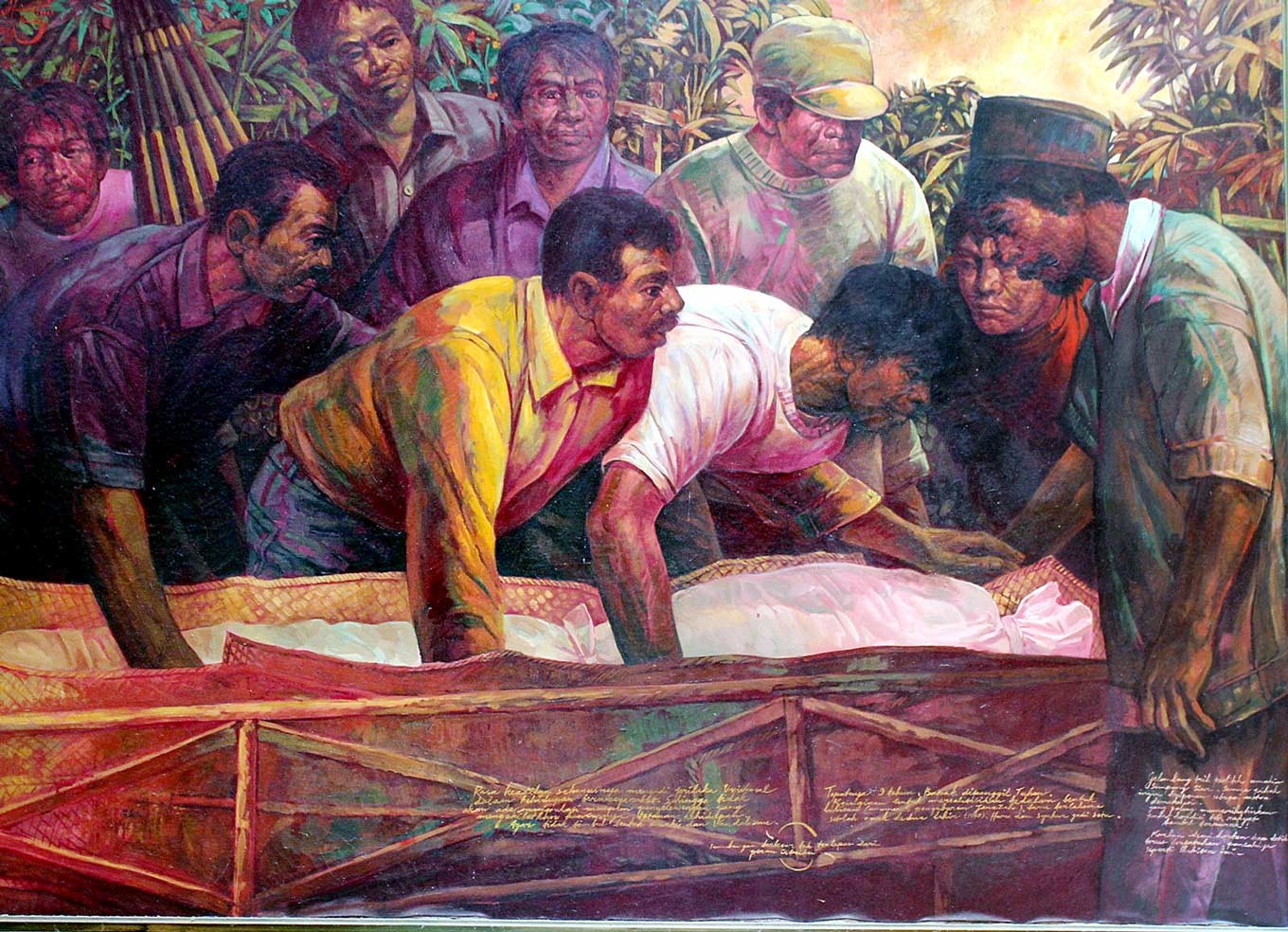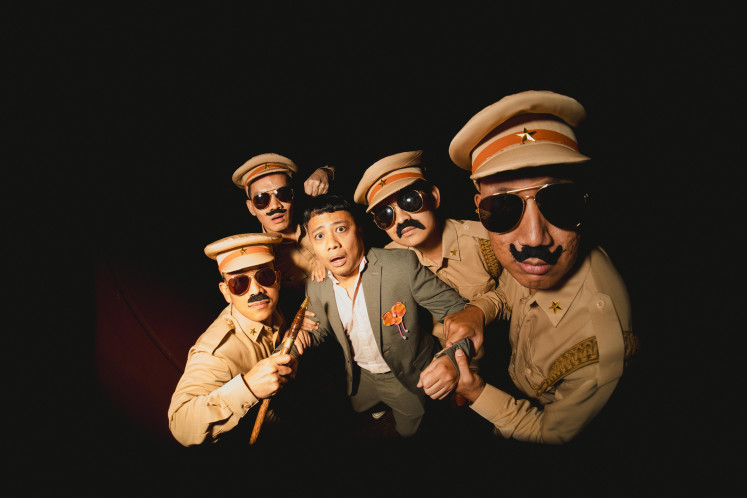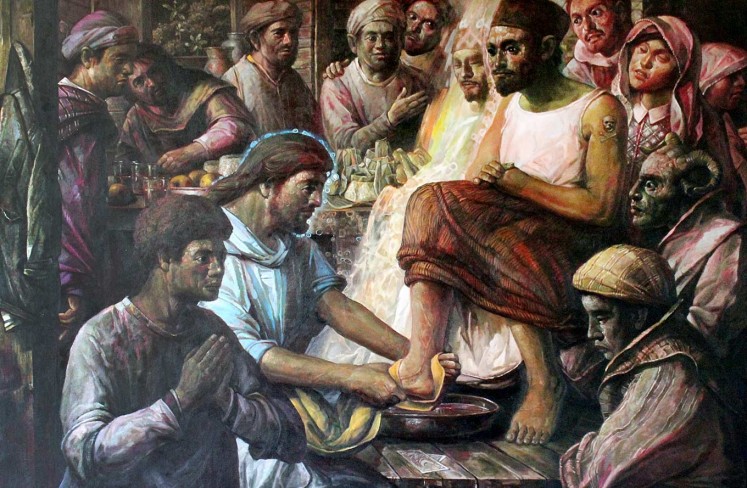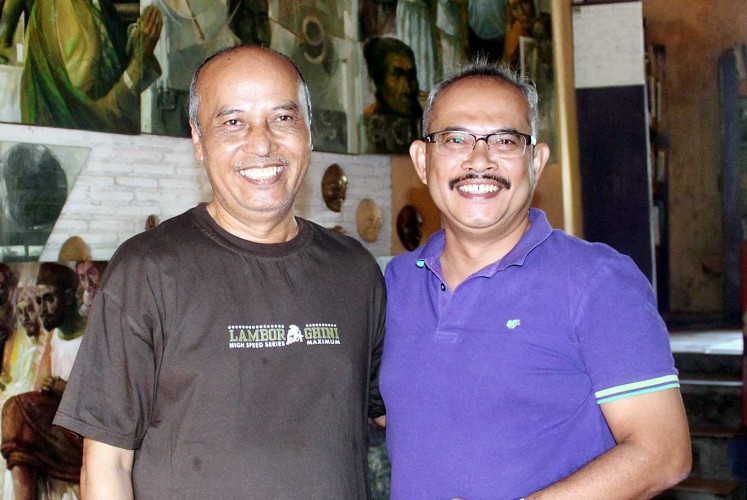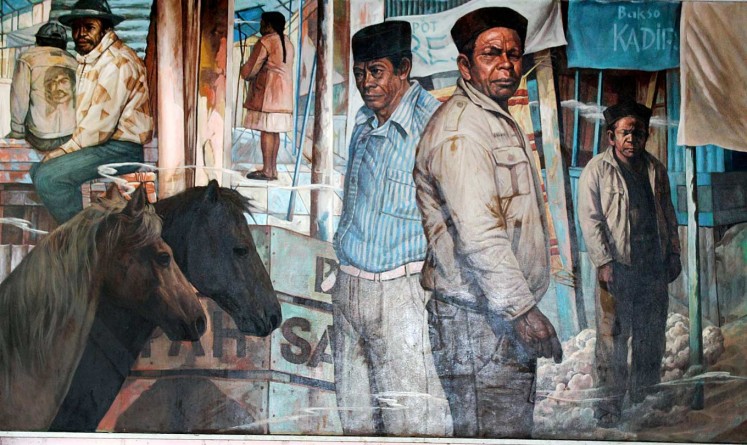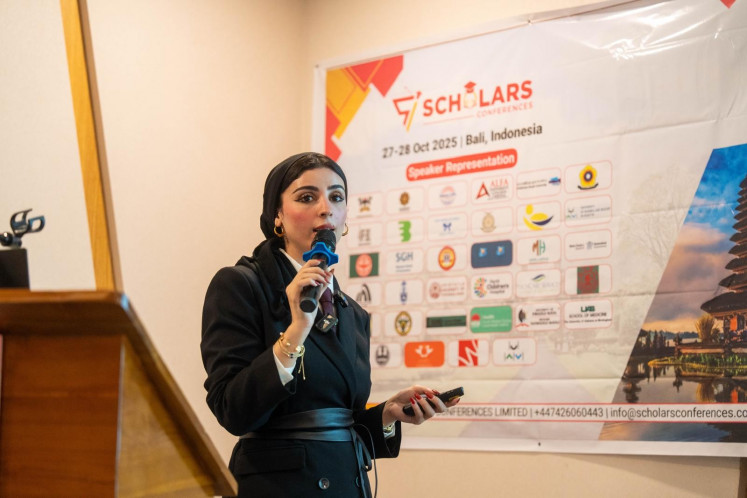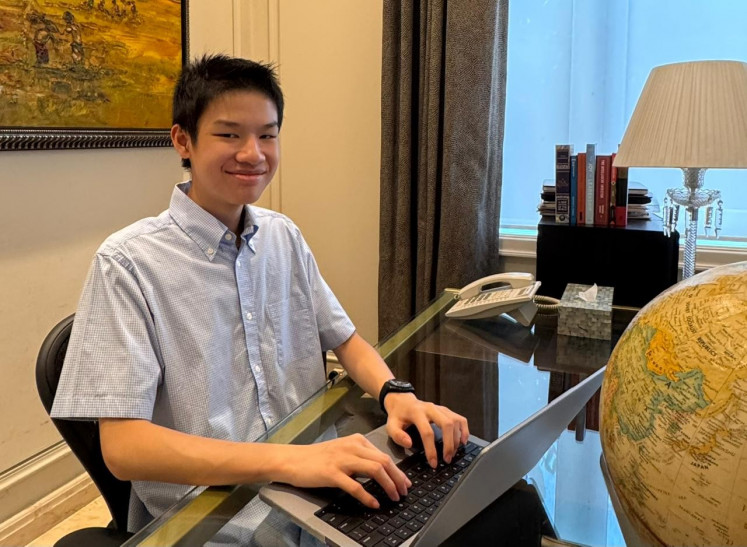Popular Reads
Top Results
Can't find what you're looking for?
View all search resultsPopular Reads
Top Results
Can't find what you're looking for?
View all search resultsSeeing faith through art
“We can find our own faith through art,” said artist Slamet Hendro Kusumo.
Change text size
Gift Premium Articles
to Anyone
E
dwin Koamesah had a great idea. That’s his assessment and maybe it will turn out okay. But maybe not. Some may misinterpret his motives and try to trash his dream.
For the record, Edwin Koamesah – a Surabaya engineer, art collector and businessman – is confident that his plan will work. Others have their private doubts and mutter that it’s risky — which is probably correct.
The plan is to hold a traveling art exhibition called After Three Days. It will open later this year in the East Java capital Surabaya and feature 20 large canvasses painted by artist Slamet Hendro Kusumo (Henkus), 58.
These are being created in his studio, called Omah Budaya Slamet (Slamet’s Cultural Home), in the East Java hill town of Batu.
So far so good. Now, to the tricky part: Koamesah is a Protestant, Henkus a Muslim and the pictures focus on the crucifixion and what the Bible says happens next. However, there’s little in common with the art that features in churches across the archipelago.
A canvas of the Last Supper has the disciples ready to slice the top off a tumpeng (a yellow rice mountain served for special events).
Thomas the kissing betrayer wears glasses. Facial features are Arabic, Indian, European, Chinese, Javanese and a mix. As there are no known portraits of Jesus made during his life, artists have developed their own images. These usually show a slender, handsome and bearded man who looks more Caucasian than Jewish.
Henkus rejects that standard. He’s certainly human and ordinary, though the events are extraordinary. The pictures may be cursed as sacrilegious by the orthodox who want trumpeting angel choirs and sunbeams shafting through clouds. In the West, this would be a yawn. The rock opera Jesus Christ Superstar broke the blasphemy barriers 47 years ago. But Indonesia is different.
Jesus washes a disciple's feet by Slamet Hendro Kusumo (JP/Erlinawati Graham)Some Muslims will be upset that a man of their faith is interpreting Christianity (Islam forbids portraits of Mohammad), but that strengthens the impact, according to Koamesah, who commissioned the works.
“We want these pictures to appeal to the young,” he said “We’ve developed the themes together, but these are Henkus’s paintings and they go far beyond my expectations.
“It’s the strength of his interpretations that’s important. His art is powerful, it makes you think and it stimulates discussions.”
It certainly did during its three open-studio days. Among those coming to peer and ponder was Anik Lailatul Muniroh, 21, who is studying English at a local Islamic university.
“I’m a pluralist and like the idea,” she said before stating her position firmly: “But don’t call me a liberal.”
When told the current ruling group in Australian politics is called the Liberal Party and its supporters button-down conservatives, she was even more confused.
“’Liberal’ in Indonesian means things like free sex and a bad lifestyle,” she said. “But no one is perfect in any religion. Everyone has strengths and weaknesses. We should be searching for goodness.”
Many find the idea of valuing other religions difficult if it means diluting their own commitment. Henkus had no such concerns.
Good friends: Artist Slamet 'Henkus' Hendro Kusumo (left) and collector Edwin Koamesah. (JP/Erlinawati Graham)“Before starting work, I researched the life of Christ. That included reading the Bible, Stamford Raffles’s History of Java and scholarly texts on Christianity. I’ve questioned much, learned a lot and respect what I’ve read. But Islam remains my path to God.
“It hurts me to hear people saying their belief is the only one. Every religion teaches the same thing: love. Humans invented religion and we should keep open minds about other people’s beliefs and opinions.”
The artist was born and raised in Batu, the weekend refresher for weary Malangites as Bandung is for jaded Jakartans. But Henkus looks beyond the hotels and hedonism.
“You see the traffic and the crowds seeking fun, but away from the roads is a community of artists sustained by the collective values of Indonesian village life,” he said.
“It’s the ideal location for anyone concerned with spirituality; it’s surrounded by the ancient kingdoms of Kediri, Singasari and Majapahit.”
When reminded that most of the known temples in East Java are in Malang’s flatlands he responded: “Those are only the ones known so far. There are more to be discovered and they are here.”
Local farmers adrift by Slamet Hendro Kusumo (JP/Erlinawati Graham)This suggests that Henkus has his head in the saturated clouds that drop onto the peaks in the afternoons, but the man is well educated with a higher degree in sociology. His mother was Chinese and his father from Java; they had no known artistic talent, likewise his three children.
His parents let their son extend his inquiries into philosophy. He’s assembled a complex set of ideas exploiting the paradoxes of religions where no one knows the certainty of any statement said or written centuries ago, but instead mold texts to fit their outlook.
The tones are somber. He populates his canvases with faces that look startled, dismayed, confused, never triumphant, but not defeated. Sadly most are men, which fits the time-toughened narrative that women belong in the background as supporters, not activists.
Sometimes he adds words like Democracy Zero; these tend to diminish the effect by disallowing viewers the chance to make their own interpretations of the ambiguities. But these are minor gripes.
Henkus is a humanist not confined to religious art. His secular pictures are social commentaries: a group of mourning men burying Henkus’s father knowing they will follow in time, a cluster of bemused middle-aged workers realizing that the old ways of farming can no longer sustain their families.
“We can find our own faith through art,” he said. “Mixing the modern with tradition in subtle ways makes the point that some messages are valid whatever the place and time. I hope that my work can lead to better understanding of the mysteries.”

